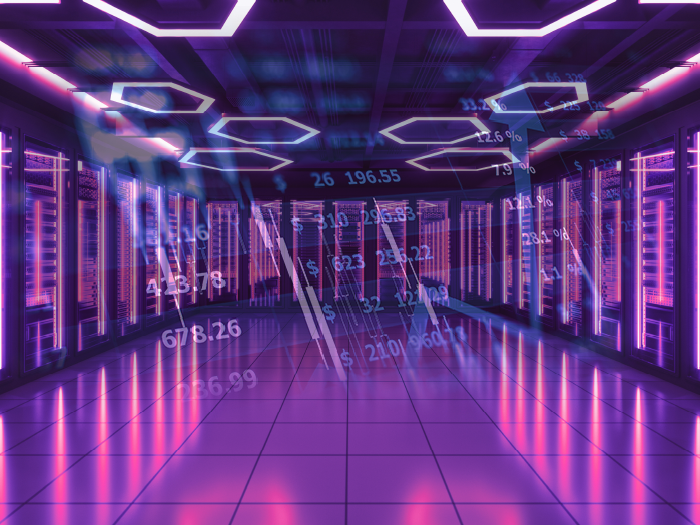News
better business decisions
Posted 4 months ago | 7 minute read

Demand Response: what is it, how it works and what are its benefits?
In this article GridBeyond looks at what demand response is, how it works, what benefits it delivers, and how it fits into a holistic energy management strategy.
When it comes to energy, value is determined by three key factors: price and quantity and time. When and how you use energy is just as important as the price you pay for it and how much you use. Ultimately, the ability to be flexible about when you use energy represents both a value and a cost and utility and grid demand response programs allow you to monetize that flexibility.
By participating in demand response programs your business could receive substantial financial payments for agreeing to reduce energy in response to grid signals, helping to offset some of the cost increases seen over the last two years. The payments earned from these programs can then be reinvested into energy efficiency measures, renewables or battery storage technologies that provide further flexibility to your site, reduce your operating costs and support the transition to a greener future.
What is Demand Response?
Practically speaking, electricity cannot be easily stored on a large scale. As a result, supply and demand for electricity must remain in a balance.
Demand Response, which is also known as Demand Side Response (DSR) or Demand Management is a mechanism used by grid operators to help balance electricity supply and demand. It is used primarily to prevent power outages caused by grid capacity stress and maintenance issues.
When demand goes up (e.g., due to an increase in energy usage during a heat wave, or due to a decrease in supply when a transmission line goes down) utilities and grid operators have a few options:
- risk a blackout
- buy electricity on the open markets
- fire up peaking power plants
- dispatch demand response and pay large energy users to reduce consumption
How does Demand Response work?
Demand Side Response programmes work by financially incentivising participants to reduce their demand on grid-supplied electricity at times when the grid faces stress.
For example, if an energy intensive business can reduce its energy consumption at times of peak demand on the grid, or at times of reduced renewable generation, the grid operator will reward business for the amount they reduce. This can be by reducing the load used on site, or by switching to using on-site generation (such as combined heat and power) or drawing from energy storage (such as a behind-the-meter battery).
This provides businesses with an additional revenue stream and, when working with the right energy partner, reduces overall electricity costs too. The financial and operational benefits can be very significant.
What are the benefits of Demand Response?
- new revenue: participating businesses earn significant revenue depending on how many MWs can be made available, how frequently and the current market price.
- energy savings: engaging in Demand Response means that participants are working to decrease their electricity use at times of peak demand when prices are high, which helps to reduce overall energy costs.
- grid stability: Demand Response benefits all electricity users. It is critical in managing and ensuring security of supply. Responding to events can help prevent an actual outage of the national or regional grid system that would result in more frequent and longer periods running on back-up generation or batteries.
- sustainability: DSR also supports net zero ambitions; improving sustainability and helping to decarbonise the economy by enabling more variable renewable energy sources to be integrated onto the grid.
- improved resilience: participants in DSR programmes receive advance notice of pending periods of grid stress that may result in power outages. Knowing when the electricity supply could be disrupted allows business managers to schedule maintenance during an outage and reduce overall downtime.
Who can benefit from Demand Response?
How this is achieved within an individual business depends on operational requirements and available assets, but typically, any facility that can reduce at least 100 kilowatts of electricity is a good candidate for demand response.
Examples may include schools and college campuses, hospitals and healthcare facilities, manufacturing facilities, food processing and cold storage facilities, commercial property buildings, grocery stores and retail malls, government buildings, and many more.
Typical actions include:
- turning down or switching off equipment to decrease electricity use (e.g. reduce lighting or adjust thermostats levels, pause production or schedule maintenance)
- shifting to back-up generation (e.g. CHP plant, back-up generator, onsite renewables)
- switching to onsite UPS and battery storage assets
Future-proof your DSR revenues
As energy markets change, DSR is no longer just about agreeing to turn assets down a few times a year. Programmes across deregulated markets are becoming faster-acting, more data-driven, and subject to stricter performance standards. Grid operators now expect:
- more frequent and shorter notice dispatches
- continuous, verifiable telemetry and asset performance data
- proven ability to respond within tight timeframes
- greater integration with other flexibility markets
These changes raise the bar for participation. Manual processes and single-programme approaches can no longer guarantee maximum returns. The future lies in automation; instant, precise control of assets without operational disruption and in combining multiple flexibility opportunities to unlock additional revenue streams.
That’s why advanced tools like digital twins are becoming essential. By creating a virtual replica of your site’s energy profile, we can predict how assets will respond in different scenarios, optimise performance before events happen, and ensure you always meet the evolving requirements of grid programmes.
This approach not only secures compliance but also enables agile, data-led decisions that keep you ahead of the market.

How does GridBeyond bring value?
As DSR markets evolve, success increasingly depends on precision, speed, and the ability to prove performance under stricter rules. This is where GridBeyond’s combination of automation and digital twin technology gives our partners a clear advantage.
Our AI-powered platform connects directly to your energy-intensive assets, enabling fully automated dispatch in response to grid signals, often within seconds. This removes the risk of manual delays, ensures compliance with tighter performance standards, and maximises every revenue opportunity, even as dispatches become more frequent and requirements more demanding.
By creating a digital twin of your site, we can model and simulate asset behaviour across different market scenarios without disrupting operations. This allows us to:
- Test response strategies before they go live
- Predict the financial impact
- Optimise asset use across multiple programmes simultaneously; balancing DSR, wholesale market trading, capacity market commitments, and ancillary services to extract maximum combined value
This advanced visibility means we can continuously adapt your participation strategy, making sure revenues are not only protected but grown over time.
As grid services transition toward faster, more dynamic markets, the combination of real-time automation and digital twin optimisation is key to future-proofing DSR income while supporting operational resilience and decarbonisation goals.
Get started
- Identify Assets – Contact us to discuss your business needs with our experts, who will help you identify your suitable assets and establish a flexibility profile that suits your business. Our engineers will then calculate your potential markets, revenues and savings.
- Create A Bespoke Energy Journey Plan – Our team will develop a bespoke plan, from proposal and procurement to installation, including any third-party requirements, and delivery of revenues and savings year after year. We’ll work with you to establish your sites energy profiles, defining constraints and operational priorities.
- Installation – With no capital outlay for the customer, we install and configure our high-end technology platform to connect suitable energy intensive assets.
- Real-time Response – Once connecting and testing is completed, you are ready to make the most of your energy in real-time, without risk or impact to your productivity. Now your site is being monitored, we can also start to look at operational efficiency and optimisation programmes.
- Delivering benefits – Our customers start receiving revenues, generating savings and optimising energy use within one month. All whilst boosting green credentials and reducing their carbon footprint.






